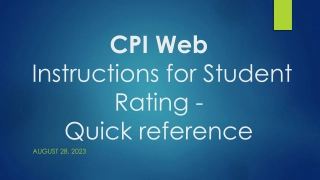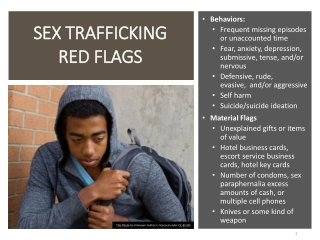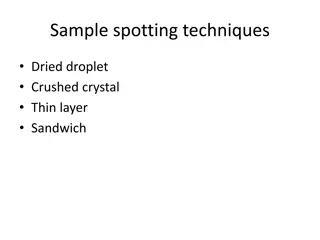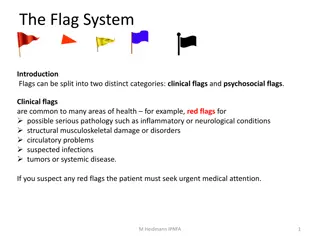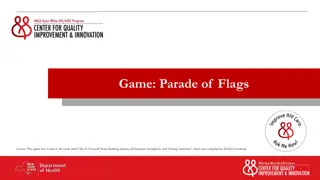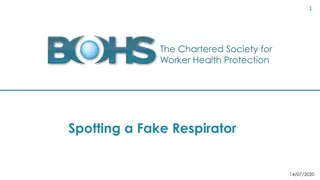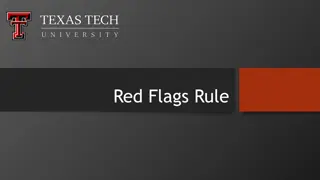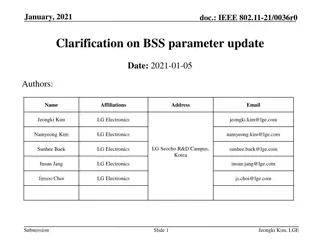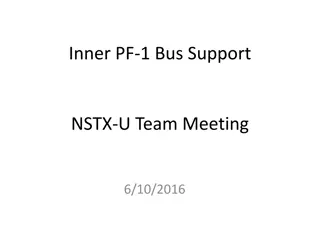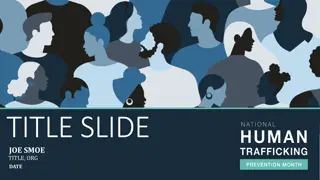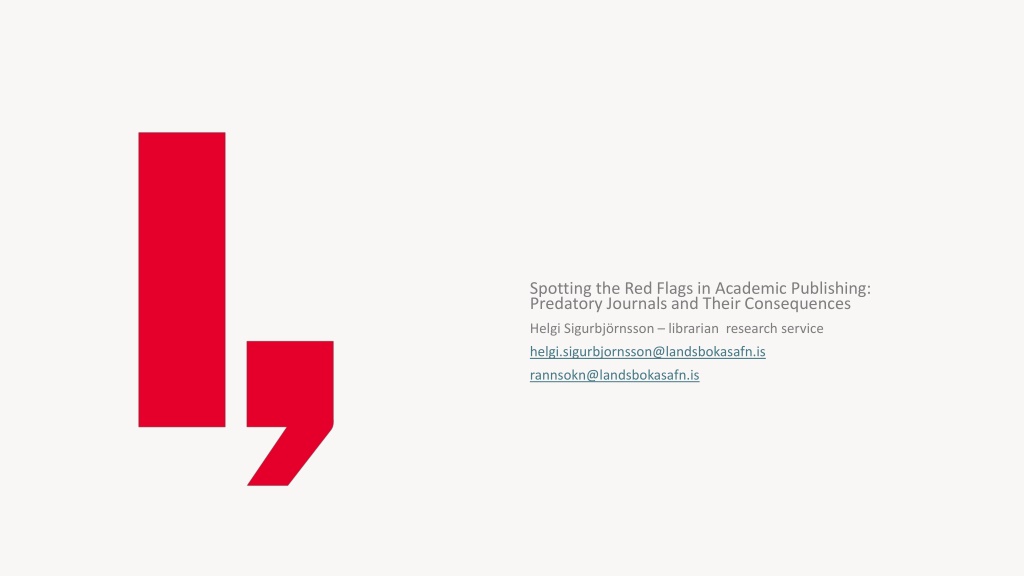
Uncovering Predatory Practices in Academic Publishing
Learn about the history and evolution of predatory publishing, from vanity press to fraudulent tactics used by publishers to exploit authors. Discover how the scientific journal publishing model has similarities to vanity publishing and the emergence of open access publishing. Understand the red flags and consequences associated with predatory journals.
Download Presentation

Please find below an Image/Link to download the presentation.
The content on the website is provided AS IS for your information and personal use only. It may not be sold, licensed, or shared on other websites without obtaining consent from the author. If you encounter any issues during the download, it is possible that the publisher has removed the file from their server.
You are allowed to download the files provided on this website for personal or commercial use, subject to the condition that they are used lawfully. All files are the property of their respective owners.
The content on the website is provided AS IS for your information and personal use only. It may not be sold, licensed, or shared on other websites without obtaining consent from the author.
E N D
Presentation Transcript
Spotting the Red Flags in Academic Publishing: Predatory Journals and Their Consequences Helgi Sigurbj rnsson librarian research service helgi.sigurbjornsson@landsbokasafn.is rannsokn@landsbokasafn.is
Predatory publishing has a long and interesting history. It has its roots in a publication form called vanity publishing that was developed for established publishing houses to be able to publish books by unknown authors that had no foreseeable market value. The publisher would print the book, but the author would pay for everything. This model was beneficial to both parties. The author could get his first book out, even if it would likely flop, and the publishing house took no financial risk by publishing the book but established a relationship with the author that might later become famous. Some famous books have been published this way, for example Lewis Carroll s Through the looking glass. This model is problematic because it creates a potential revenue stream for the publisher not from selling the final product (books or journals), but from selling a service to the author. That in fact has created a scenario where the publisher can potentially act fraudulently towards the author.
Enter the fraudsters/ predators In 1941 the publisher C.M. Fulmiani was sentenced to 18 months in jail for mail fraud. He operated a publishing business where he would trick people into publishing books in his vanity press. The fraud was set up like this: The author would send in a manuscript to an agency run by Fulmiani. Fulmiany would then send several rejection letters to the author purporting to be from known publishers, but all praising the manuscript somehow. Your story is a masterpiece of modern literature, but unfortunately it isn t for us. Don t loose heart, your story simply must be heard . After a number of these letters the author would start to get desperate, but at the same time determined to find a publisher. Then Mr. Fulmiani would send a new letter introducing a vanity publishing house that would be willing to publish the book if the author would pay the bill. The author would jump at the opportunity and Fulmiani would charge excessively for every step in the publishing process urging the author to pay for more and more copies. In the end the author was stuck with a truckload of unsellable books of low quality.
The vanity publishing model and scientific publishing Until recently the scientific journal publishing model has largely remained unchanged. It resembles the vanity publishing model in a few ways. When the first journals were published in 17thcentury the audience was a small community of only a few universities. The potential for a publishing house to break even on publishing these journals was so unlikely, that it was deemed proper for the authors and peer reviewers to not only work pro bono but even pay a fee to get published. The universities would then pay the scholars and reward them for their work. It was sensible at that time, but since then the audience and potential for revenue for the publishers has grown exponentially. With the rise of free open access publishing a new chapter was formed in this saga as reputable publishers aligned their business models even more with the vanity press model by creating the golden open access A business model that asks the author to pay not only the fees of yesteryears, but additionally pay for open access. This extra fee is based on the perceived revenue the publisher might have gained had the article been published behind a paywall. The scientific community is partly driven by the publish or perish dogma and therefore scientists need to find publishers for their work, even when the most reputable publishers will not publish. That is when you run the risk of encountering questionable publishers. The difference that matters between a reputable publisher and a questionable or predatory publisher is that the former claims to offer robust peer review and does so, but the latter makes the same claim but doesn t. There are other differences, but they are not as important.
Whatis it that a predatorypublisherdoes? Offers a publication in a journal that is different from what it appears. Does not maintain the strict quality control (peer review) that occurs in an academic publication but pretends to do it. Accepts all subjects (quantity over quality) Focuses the publication's income on "services to authors" rather than sales of the journal. Publishes often and in large quantities at once (the more articles, the more profit) Refers to impact factors that are false /and or artificial. Attempts to get paid for everything (preferably from the author and his organizations.) Likely to take your paper hostage if you realize your mistake. Floods the market with subpar research articles and endangers the overall quality of academic research Emulates legitimate publishers. F.ex webofsciences in place of webofscience
Someexamplesof redflags: Rapid publishing- The peer review process is given an unrealistically short time (e.g., 2 weeks). Claims to be open access but is not listed in doaj.org (Directory of Open Access Journals). Predatory Publishing The business model is mainly focused on profiteering from the authors but not on selling access to the journal. The things promised (robust peer review, impact factor, etc.) turn out to be fake. The journal isn t in a specific field, or the articles don t follow the stated scope of the journal. A huge number of published articles per issue. The publisher doesn t appear in Scopus CiteScore or Clarivate InCites. The journal homepage has an amateurish look (spelling errors, Gmail, etc.). The publisher sends spam emails requesting articles, often filled with praise for the author. The editorial board is made up of scholars who don t recognize that they are affiliated with the journal or don t exist. The Journal Website is focused on the authors rather than the readers.
Moreredflags Submission of articles is through an email rather than a publishing platform Submission fee or handling fee implying payment to submit Retraction fee Publishing fees are unclear The journal has a similar name to a legitimate journal The journal cites false indexing, including f.ex. Google Scholar and Copernicus
Types of questionable journals/publishing Fast track publications Fast track publications the peer review process is too short to allow for proper peer review, e.g. about 2 weeks. advertise it Special issue publishers Special issue publishers Publishers publish a large number of special issues in this and that field. Mega journals Mega journals play on the impact factor. Hijacked journals Hijacked journals pretend to be another journal
Example of fast-track publication Journals that advertise fast-track publication can seldom be trusted. Peer reviewers need to be specialists in the subject the article is about. It takes time to find those specialist and get theyr acceptance to review. Good peer review also takes time..
A typicalwordingof a letterfroma dubious publisher We are reaching out to you because we have identified you as a leading researcher in your field. At the Global Journal of Emerging Sciences, we are dedicated to publishing groundbreaking research and innovative studies, and we believe your work would be a perfect fit for our next issue. We invite you to submit your manuscript for consideration.
Mega-Journals Getting a journal into Clarivate InCites and Scopus CiteScore (the two leading impact factors ) takes about 3 years. The first 3 years of a Mega-Journal it adheres to normal publishing practices, but once they have got on the lists they change tempo and the amount of articles published jump from tens to hundreds or thousands of articles per year. Acceptance rate of articles is high and the articles are in a very wide area. These journals are regularily delisted from InCites and CiteScore, but until that happens they enjoy an unusually high impact factor.
Special issue publications A scholar is contacted and invited to become the guest editor of a special issue, as he is, of course, at the forefront of his field. Articles are then obtained from those familiar with this scholar. All the work of the publication is minimal and poorly executed, but the publication may still be usable, thanks to the efforts of individual editors. The results will be published as a special issue, featuring a collection of a very large number of articles. Since it is a one-time publication, it will never appear on journal lists.
What happens if you publish with a predatory publisher? Serious threat to the integrity of research Researchers and consumers may be affected Reputation of authors could be damaged Errors, once published, will be cited
Can you request to withdraw your paper from a predatory journal? Yes but: As per our policies, a withdrawal fee of 40% on the APC, totaling 929 Euros, would apply to withdraw your article from our journal. The article will be taken hostage.
Consequences of submission You need to contact V sinda- og n sk punarsvi for assistance If you resubmit to a legitimate journal, declare the submission to the predatory journal and explain the withdrawal. The predatory journal has a copy of the submitted manuscript and might publish it regardless in the same journal or a sister publication > You need to monitor this Keep all correspondence and document all contact with the journal You need to state on the CV that this publication is being addressed to reduce effects of predatory publication in funding applications The researcher s reputation is tarnished. Source: Lorna Wildgaard: Predatory publishing 2.0: Spotting the red flags and staying protected [Danish OA week 2024, oral presentation]

